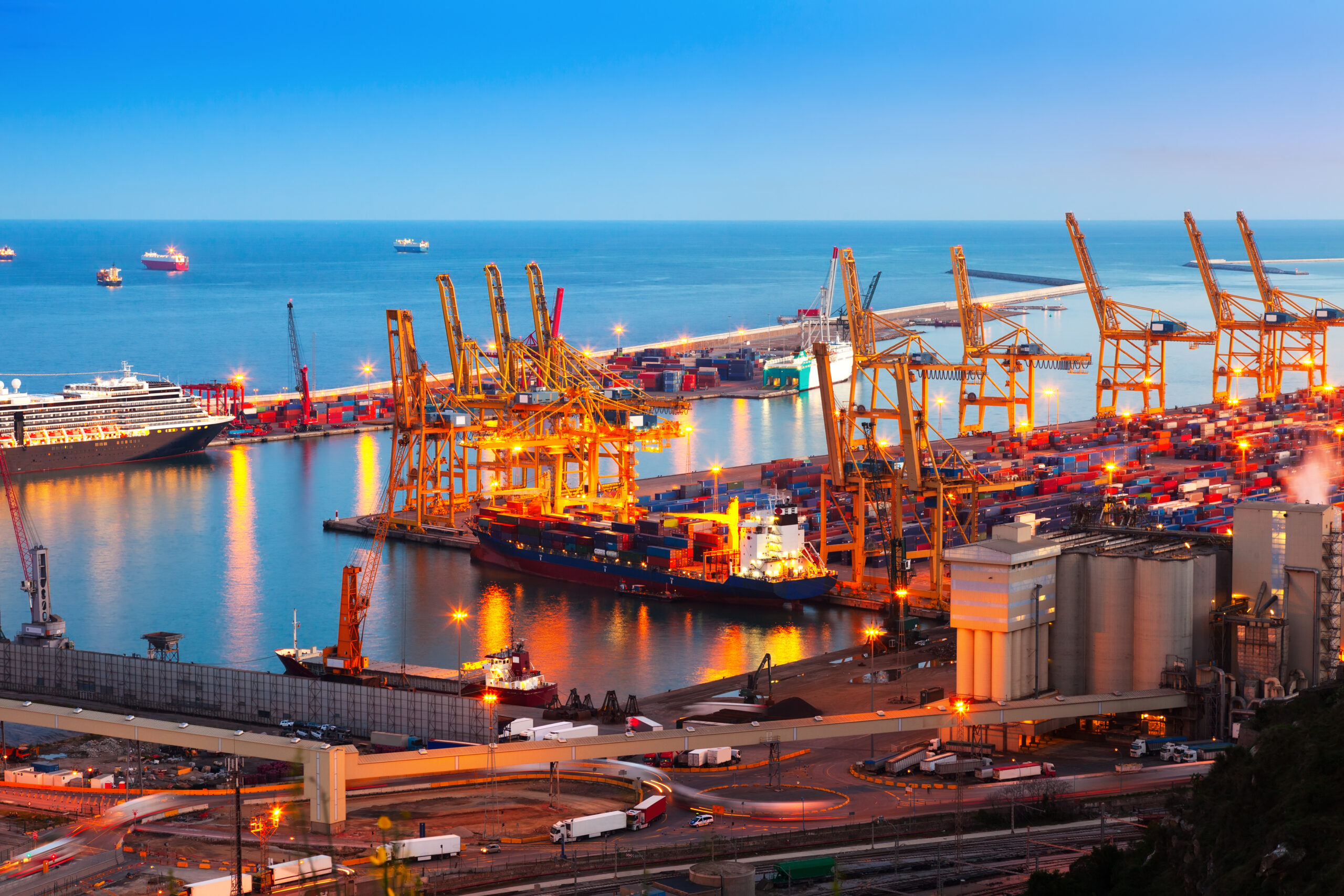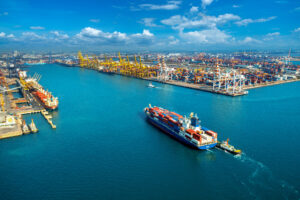With the 2024 U.S. port strike now officially over, its scale and effects are clear.
Over 65,000 workers were involved, and ports from New England to Texas stood still, halting the flow of goods.
And though the strike has now ended, at least for now, the economic ripple effects will be felt for some time. Businesses are still assessing the damage, and consumers may continue to see price hikes and delays in deliveries.
In this blog, we’ll cover the origins of the port strike, the industries it impacted, the staggering costs, potential long-term economic consequences, and what it means for businesses.
Let’s dive in.
What is the International Longshoremen’s Association? How the port strike started?
The lead-up to the 2024 U.S. port strike didn’t happen overnight.
For months, tensions brewed between the International Longshoremen’s Association (ILA) and the United States Maritime Alliance (USMX).
The International Longshoremen’s Association (ILA) is a labor union that represents dockworkers and maritime workers in the United States and Canada. Founded in 1892, the ILA primarily advocates for workers’ rights, including better wages, job security, and improved working conditions.
Recently, the ILA had been pushing for significant raises, pointing to inflation and increased living costs as reasons to compensate dockworkers more fairly.
They also wanted to address concerns over automation, which threatens to replace many jobs at ports. The workers were looking for assurances that human labor wouldn’t be sacrificed for machines, a common trend in logistics today.
Several rounds of negotiations took place earlier in the year, but they hit a deadlock by late September. When talks stalled, the ILA decided to strike on October 1, marking the first coast-wide walkout since 1977.
This disruption followed months of warnings from both sides. Importers had even prepared by rushing shipments in anticipation of a shutdown.
While the workers focused on better wages and job security, the clock was ticking.
The strike quickly gained national attention, especially as the holiday shopping season loomed, raising concerns about widespread delays and economic fallout.
What is the current status of the strike?
Though the 2024 U.S. port strike started with significant disruptions, it ended relatively quickly.
After three days of halted operations, the ILA and the USMX reached a tentative agreement on October 3, 2024. Both sides agreed to wage increases for the dockworkers and extended the Master Contract until January 2025.
With work resuming at all affected ports, the immediate threat of further economic fallout was avoided.
During the strike, major ports from Maine to Texas were severely impacted, with long queues of container ships waiting to unload. At one point, more than 300,000 TEUs (twenty-foot equivalent units) sat idle outside ports like Savannah, New York, and Norfolk.
Some industries had anticipated the strike, so they pushed shipments ahead of time.
However, time-sensitive goods like food and automotive parts were at higher risk, as delays in deliveries affected their supply chains more acutely.
President Biden praised both sides for coming to an agreement, but the quick resolution doesn’t mean all concerns are gone.
While wages were addressed, other contentious issues, like automation and worker protections, remain unresolved and will be revisited in upcoming negotiations.
For now, the port strike is over. But if things are not addressed properly, another strike could happen again in the future.
What was the economic impact of the strike? And what did the docker’s strike cost?
The economic impact of the recent port strike was massive, affecting numerous sectors across the U.S. economy during the three days operations were put to stop.
Experts estimate losses ranged between $4.5 billion and $7.5 billion per day. This includes both direct and indirect costs.
This figure is notably higher than past strikes, which typically caused losses of up to $2 billion daily. The widespread nature of the disruption, impacting ports from Maine to Texas, magnified the effects.
The transportation and logistics sector bore the brunt of the strike.
The strike caused containers to pile up and trucks to wait for days without cargo. This situation not only completely stopped shipping but also affected rail services, leaving goods meant for transport inland stuck at the ports
Consequently, shipping costs also increased, leading to delays in deliveries, particularly for auto parts and time-sensitive goods.
The auto industry, heavily reliant on just-in-time delivery, faced challenges due to delayed auto parts deliveries. Studies suggest that these delays led to production slowdowns that could cost manufacturers up to $400 million per day.
The retail sector faced similar challenges. Many retailers had prepared for the upcoming holiday season, but the strike messed up their inventory restocking plans.
Delays raised concerns about shortages, especially for items that were supposed to arrive right in time for the holidays. Because of rising shipping costs, shoppers might see fewer discounts and higher prices in stores.
Overall, the strike cost retailers around $2 billion a day, making it hard for them to manage their pre-ordered stock effectively.
Agriculture also felt the strain, especially for perishable goods like bananas, meat, and dairy, which risked spoiling due to delayed transport.
Exporters scrambled for alternative solutions, while products like whiskey and chocolate faced their own distribution hurdles.
Construction materials, including utility poles, were not exempt either. Supply chain disruptions slowed construction and infrastructure projects, potentially leading to increased costs and future delays in broader initiatives.
The ripple effects of the strike extended to local economies. Cities with major ports, such as Los Angeles and New York, experienced reduced economic activity, impacting small businesses that rely on port traffic.
The temporary halt in operations also led to job losses in sectors like trucking and logistics, adding further strain to the economy.
Historical data from previous strikes indicates that prolonged disruptions can have long-term repercussions on GDP growth.
For instance, during earlier strikes in 2014 and 2002, the U.S. economy experienced a loss of about 0.1% of GDP for each week of disruption.
While the 2024 strike was resolved quickly, the financial damage incurred during that brief period is likely to have lasting effects on supply chains in the months ahead.
What have been the outcomes of the strike?
The most immediate consequence has been the interruption in supply chains, especially as companies try to make up for lost time.
Ports play a crucial role in handling imports and exports, and delays caused backlogs. Even now with workers returning to their posts, it will take weeks to months to fully clear the congestion.
For businesses, the strike may lead to a shift in strategy. Some companies might explore alternative ports or diversify their suppliers to reduce reliance on any one region.
Others may invest in technologies to streamline their logistics and avoid future disruptions. These adjustments could reduce future risks but will also come with added costs.
On the consumer side, price hikes may be inevitable. With supply chains disrupted, retailers could face shortages of goods, particularly during the holiday season.
This could lead to higher prices on everything from electronics to food items. While some of these effects will be temporary, others may stick around longer as businesses adjust to new supply chain realities.
Lastly, the broader economic impact could result in slower growth.
A prolonged slowdown in trade has the potential to shave points off GDP growth, especially if the backlog isn’t cleared quickly.
For an economy already navigating inflation and fluctuating demand, this strike has added another layer of uncertainty.
Conclusion
The 2024 U.S. port strike may have ended, but its impact will be felt for some time.
From disrupted supply chains to rising costs in key industries, the strike serves as a reminder of how critical smooth operations at major ports are to the economy.
It highlighted the vulnerability of industries dependent on timely imports and exports, while also bringing labor issues to the forefront.
In essence, as the U.S. navigates the path forward, businesses and policymakers alike will need to be mindful of the long-term effects left in the strike’s aftermath.
References
- CBS News. (2024, October 1). Port strike update: East coast docks remain quiet, food supply chains disrupted. https://www.cbsnews.com/news/port-strike-east-gulf-chocolate-bananas-whiskey/
- CNN. (2024, October 4). Port strike ends: What’s next for the economy? https://edition.cnn.com/2024/10/04/business/port-strike-ends-whats-next/index.html
- CNBC. (2024, October 3). Port strike ends as workers agree to tentative deal on wages and contract extension. https://www.cnbc.com/2024/10/03/port-strike-ends-as-workers-agree-to-tentative-deal-on-wages-and-contract-extension.html
- Investopedia. (2024). What was the economic impact of the strike? https://www.investopedia.com/us-dockworkers-strike-begins-what-it-means-for-the-economy-8721616
- Investopedia. (2024). How a U.S. port strike could affect you. https://www.investopedia.com/how-a-us-port-strike-could-affect-you-8719583
- Investopedia. (2024). The U.S. port strike has started: How it might affect you. https://www.investopedia.com/the-us-port-strike-has-started-how-it-might-affect-you-8721493
- New York Times. (2024, October 1). Port dockworkers strike: Economic implications. https://www.nytimes.com/2024/10/01/business/economy/port-dockworkers-strike-economy.html
- USA Today. (2024, September 30). Port shutdown: What to expect. https://www.usatoday.com/story/money/2024/09/30/port-shutdown-strike-what-to-expect/75450584007/
- Motive. (2024). Port strike 2024: A complete overview. https://gomotive.com/blog/port-strike-2024/





